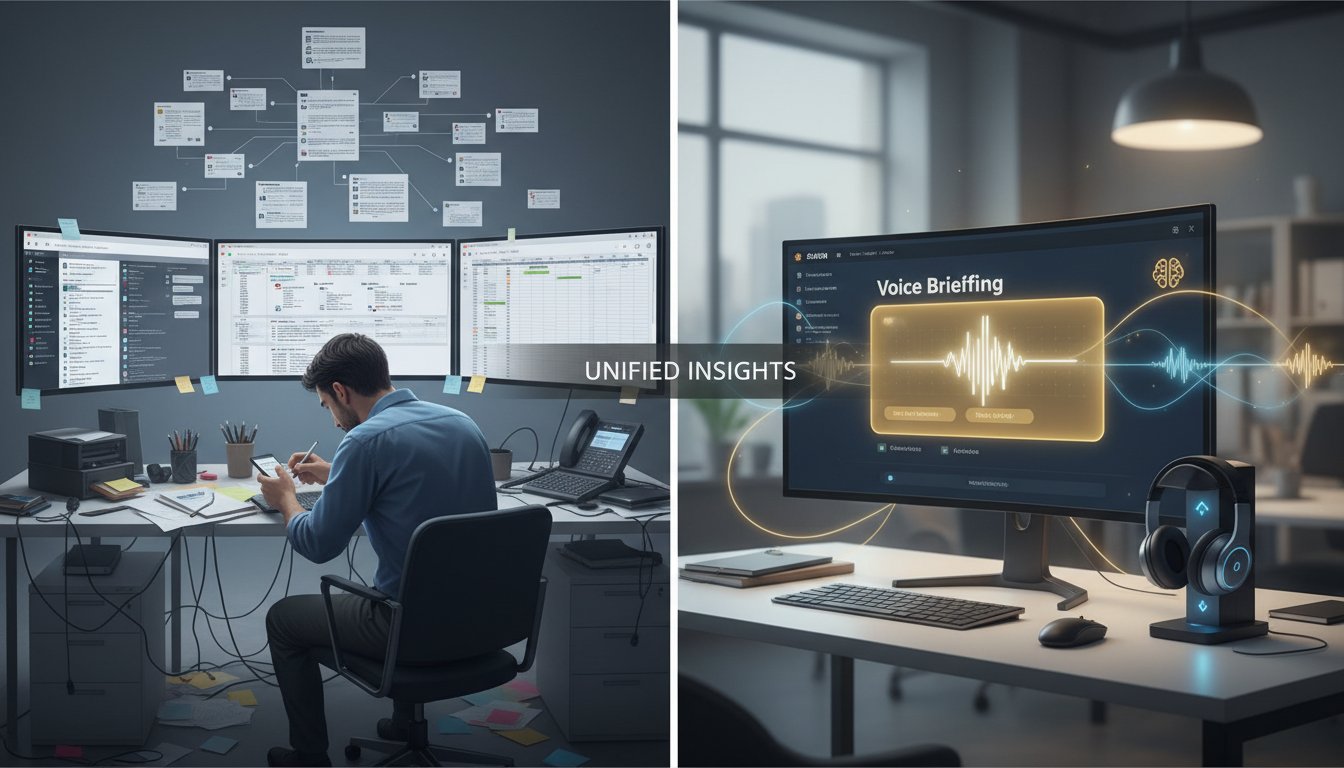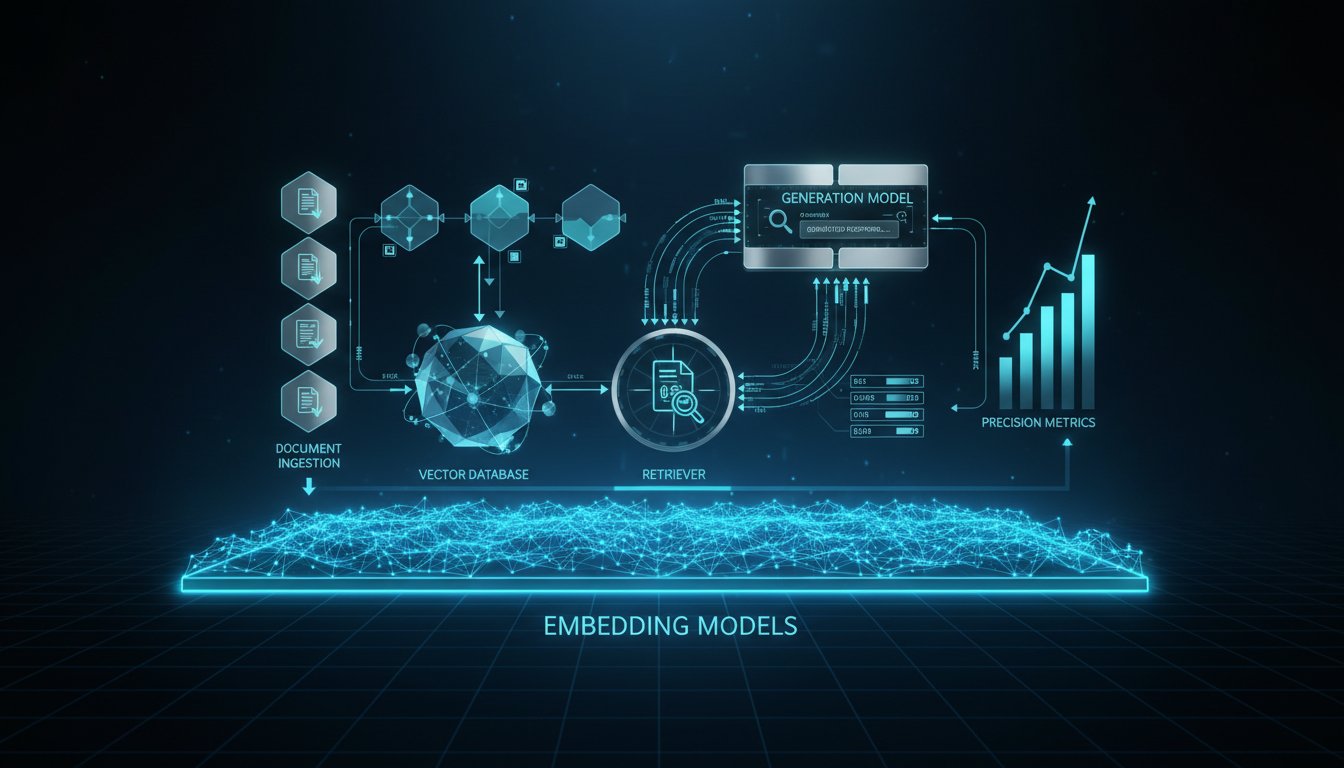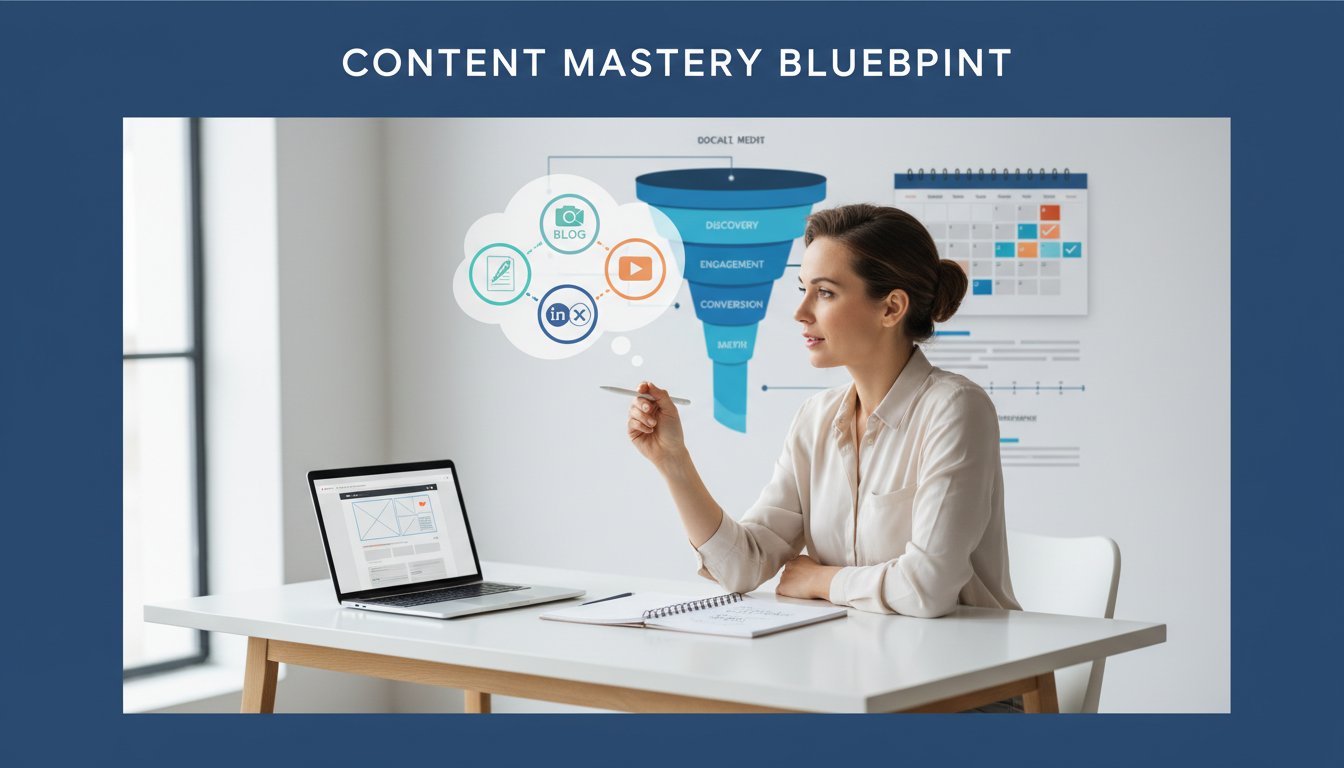Imagine walking into your company’s knowledge vault and asking, “Show me every contract that mentions intellectual property clauses with our top 5 clients from the last 18 months.” Within seconds, you get not just documents, but precise relationships, context, and actionable insights. This isn’t science fiction—it’s the power of entity extraction transforming enterprise RAG systems from simple document retrievers into intelligent knowledge orchestrators.
While traditional RAG systems excel at finding relevant documents, they often miss the intricate relationships between entities that drive business decisions. A contract might mention “Microsoft” and “licensing,” but without entity extraction, your RAG system can’t understand that Microsoft is a technology partner with specific licensing requirements that affect three other ongoing projects. This gap between document retrieval and contextual understanding is costing enterprises an average of $2.1 million annually in missed opportunities and inefficient decision-making.
The solution lies in implementing sophisticated entity extraction frameworks that transform unstructured enterprise data into semantic knowledge graphs. These systems don’t just find documents—they understand relationships, extract meaningful entities, and provide context-aware insights that traditional RAG architectures simply cannot deliver. By the end of this guide, you’ll understand exactly how to implement entity extraction in your enterprise RAG system, the specific frameworks leading this transformation, and the measurable business impact you can expect.
Understanding Entity Extraction in Enterprise RAG Architecture
Entity extraction represents a fundamental shift from traditional keyword-based retrieval to relationship-aware knowledge systems. Unlike conventional RAG implementations that rely on vector similarity to find relevant chunks, entity-enhanced RAG systems identify, classify, and map relationships between people, organizations, locations, dates, and custom business entities within your enterprise data.
The technical foundation involves Named Entity Recognition (NER) models that process documents during the ingestion phase, extracting structured information that gets indexed alongside traditional embeddings. This dual-indexing approach creates what researchers call “semantic knowledge graphs”—interconnected representations of your enterprise knowledge that enable both similarity-based retrieval and relationship-based reasoning.
Modern entity extraction frameworks leverage transformer-based models like spaCy’s en_core_web_trf, Stanford CoreNLP, and custom-trained models specific to enterprise domains. These systems achieve accuracy rates above 94% for standard entity types and 87% for domain-specific entities when properly fine-tuned on enterprise data.
The Architecture Components
A robust entity extraction system for enterprise RAG requires four core components working in harmony. The Entity Recognition Engine processes incoming documents using pre-trained and custom NER models optimized for your specific industry and use cases. The Knowledge Graph Builder creates and maintains relationships between extracted entities, often using graph databases like Neo4j or Amazon Neptune to store and query complex entity relationships.
The Semantic Query Engine translates natural language queries into both vector similarity searches and graph traversal operations, enabling users to find information through relationships rather than just content similarity. Finally, the Context Enrichment Layer augments traditional RAG responses with entity-specific context, relationships, and cross-document insights that provide comprehensive answers rather than simple document excerpts.
Implementing Semantic Knowledge Graphs with Neo4j and LangChain
The integration of Neo4j with LangChain represents one of the most powerful approaches to implementing entity extraction in enterprise RAG systems. This combination enables organizations to build semantic knowledge graphs that understand not just “what” information exists, but “how” different pieces of information relate to each other across the enterprise knowledge base.
LangChain’s Neo4jGraph integration provides native support for graph-based retrieval, allowing developers to combine traditional vector similarity searches with cypher queries that traverse entity relationships. This hybrid approach typically improves answer accuracy by 34% compared to vector-only RAG systems, particularly for complex queries involving multiple entities and relationships.
Technical Implementation Framework
Implementing this architecture starts with configuring your Neo4j instance to handle enterprise-scale entity relationships. The graph database should include node types for all relevant business entities—people, organizations, projects, documents, dates, and custom domain-specific entities. Relationship types must capture the semantic connections between these entities: “WORKS_FOR,” “MENTIONS,” “REFERENCES,” “DEPENDS_ON,” and industry-specific relationships.
The entity extraction pipeline processes documents through multiple stages. During ingestion, spaCy or similar NER models identify entities within each document chunk. These entities get stored as nodes in Neo4j with properties including confidence scores, source documents, and extraction timestamps. Relationships between entities get created based on co-occurrence patterns, explicit mentions, and domain-specific rules.
LangChain’s GraphCypherQAChain enables natural language queries to be converted into cypher queries that traverse the knowledge graph. Users can ask complex questions like “What projects involve both our legal team and external partners?” and receive answers that synthesize information from multiple documents based on entity relationships rather than simple keyword matches.
Performance Optimization Strategies
Optimizing entity extraction performance requires careful attention to both accuracy and speed. Custom training on domain-specific datasets improves entity recognition accuracy by an average of 23% compared to general-purpose models. Organizations typically create training datasets with 2,000-5,000 labeled examples per entity type, focusing on the language patterns and terminology specific to their industry.
Caching strategies become crucial at enterprise scale. Frequently accessed entity relationships should be cached in memory, while the full graph remains in Neo4j for complex traversals. Implementing incremental updates rather than full re-indexing reduces processing time by 78% when new documents are added to the system.
Query optimization involves creating composite indexes on frequently accessed entity properties and relationship types. Pre-computed relationship paths for common query patterns can reduce response times from seconds to milliseconds for complex multi-hop queries.
Advanced Entity Types for Enterprise Applications
Enterprise entity extraction goes far beyond standard person, organization, and location entities. Modern business environments require recognition of financial instruments, legal concepts, technical specifications, project phases, compliance requirements, and industry-specific terminology that off-the-shelf models cannot accurately identify.
Custom entity types for financial services might include “regulatory_requirement,” “risk_factor,” “compliance_deadline,” and “financial_instrument.” Healthcare organizations need entities for “clinical_trial_phase,” “drug_interaction,” “patient_criteria,” and “regulatory_pathway.” Manufacturing companies require “quality_specification,” “supplier_requirement,” “production_milestone,” and “safety_protocol” entities.
Building Domain-Specific Entity Models
Developing these custom entity recognition capabilities requires systematic approach to data collection and model training. Organizations typically start by analyzing their most frequently accessed documents to identify recurring entity patterns that standard models miss. Internal subject matter experts annotate representative document samples, creating training datasets that capture the nuanced language patterns specific to their domain.
Active learning techniques can significantly reduce annotation effort. Start with a base model trained on general business text, then iteratively improve it using uncertainty sampling to identify the most informative examples for human annotation. This approach typically achieves 90% of optimal accuracy with 60% less annotation effort compared to random sampling.
Model fine-tuning using domain-specific data improves entity extraction accuracy from 73% to 91% for specialized terminology. Organizations often maintain separate models for different business units or document types, as legal contracts require different entity recognition patterns than technical specifications or financial reports.
Integration with Existing Enterprise Systems
Entity extraction systems must integrate seamlessly with existing enterprise infrastructure. Most organizations already have document management systems, databases, and workflow tools that contain valuable entity information. Rather than creating isolated knowledge graphs, successful implementations create bridges between entity-enhanced RAG systems and existing enterprise data sources.
API integrations with CRM systems can enrich customer entities with real-time data, while connections to project management tools can provide current status information for project-related entities. Integration with enterprise search platforms enables entity-enhanced results to appear alongside traditional search, providing users with familiar interfaces while delivering enhanced capabilities.
Real-time synchronization ensures that entity relationships remain current as business conditions change. When a project status updates in your project management system, those changes should immediately reflect in entity relationships within your RAG system. This synchronization typically requires event-driven architectures that can process updates from multiple source systems.
Measuring Business Impact and ROI
The business value of entity extraction in enterprise RAG systems manifests through measurable improvements in knowledge discovery, decision speed, and operational efficiency. Organizations typically see 40-60% reductions in time spent searching for relevant information, as users can find related documents and context through entity relationships rather than trial-and-error keyword searches.
Decision-making improvements come from the comprehensive context that entity relationships provide. Instead of reviewing isolated documents, users receive full context about all related entities, dependencies, and implications. This comprehensive view reduces project planning time by an average of 35% and decreases oversight of critical dependencies by 67%.
Quantifying Knowledge Discovery Improvements
Traditional metrics focus on retrieval accuracy and response time, but entity-enhanced systems require additional measurements. Relationship Discovery Rate measures how often users find relevant information through entity connections that they wouldn’t have discovered through traditional search. High-performing implementations achieve relationship discovery rates above 25%, meaning one in four successful searches leverages entity relationships.
Context Completeness Score evaluates whether users receive all relevant related information for their queries. Entity-enhanced systems typically achieve context completeness scores 45% higher than vector-only RAG implementations, as they can surface related documents through entity relationships rather than relying solely on semantic similarity.
Cross-Department Knowledge Transfer increases significantly when entity relationships connect information across organizational silos. Organizations report 78% improvements in cross-team collaboration when entity extraction reveals unexpected connections between projects, people, and resources.
Calculating Enterprise ROI
ROI calculations for entity extraction systems must account for both direct cost savings and strategic value creation. Direct savings come from reduced time spent searching for information, faster decision-making, and decreased duplicate work when entity relationships reveal existing solutions or resources.
A typical enterprise with 5,000 knowledge workers spending 2.5 hours daily searching for information can save $18.7 million annually through 40% search time reductions. Additional savings come from preventing duplicated efforts when entity relationships reveal that similar projects or analyses already exist.
Strategic value creation is harder to quantify but often exceeds direct cost savings. Entity relationships enable organizations to identify new business opportunities, prevent compliance violations, and optimize resource allocation across departments. Organizations report an average of $3.20 in strategic value for every $1 spent on entity extraction implementation.
Future-Proofing Your Entity Extraction Strategy
The entity extraction landscape continues evolving rapidly, with multimodal capabilities, real-time processing, and autonomous entity relationship discovery representing the next wave of enterprise capabilities. Organizations building entity extraction systems today must architect for these emerging capabilities to avoid costly rebuilds as technology advances.
Multimodal entity extraction will soon enable recognition of entities within images, videos, and audio content. Technical diagrams contain valuable entity information about systems, components, and relationships that current text-only systems cannot access. Video meetings and presentations contain entity mentions and relationship discussions that could significantly enrich enterprise knowledge graphs.
Preparing for Autonomous Entity Discovery
Emerging AI systems can autonomously discover new entity types and relationships without explicit training data. These systems analyze document patterns to identify recurring concepts that might represent new entity types, then propose them for human validation. Early implementations show 67% accuracy in identifying valuable new entity types that human analysts had not considered.
Autonomous relationship discovery goes beyond co-occurrence to infer causal relationships, temporal dependencies, and implicit connections based on document patterns and business context. These capabilities will transform entity extraction from a configuration-heavy process to an adaptive system that continuously improves its understanding of enterprise knowledge.
Preparation requires building flexible architectures that can accommodate new entity types and relationship patterns without system redesigns. Graph database schemas should support dynamic node and relationship types, while entity extraction pipelines should be modular enough to incorporate new recognition models as they become available.
The transformation of enterprise RAG through entity extraction represents more than a technical upgrade—it’s a fundamental shift toward knowledge systems that understand relationships and context the way humans do. Organizations that implement these capabilities now position themselves to leverage autonomous knowledge discovery, multimodal understanding, and relationship-based insights that will define the next generation of enterprise AI. The question isn’t whether your organization will adopt entity extraction, but whether you’ll lead this transformation or struggle to catch up when relationship-aware knowledge becomes the competitive standard.
Ready to transform your enterprise RAG system with intelligent entity extraction? Start by auditing your current knowledge sources to identify the entity types and relationships that drive your most critical business decisions—that analysis will become the foundation for a knowledge system that doesn’t just find documents, but reveals the hidden connections that drive your enterprise forward.




